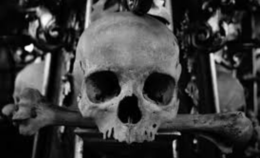The exact ties between archaic human lines and Homo sapiens may remain unknown, but a recent effort to analyze ancient Chinese skulls potentially just brought those links closer together.
To better understand the growth of the Homo family—and specifically where H. sapiens fits into the history of the world—researchers have long studied other Homo lines.
This research has led them to investigate lineages ranging from the relatively well-known Denisovans to lesser-known lines based on just a few found skulls, such as the Dragon Man and Yunxian Man lineages from China.
With some of the found skulls potentially being 1 million years old, there isn’t exactly a wealth of data to go off, so a team of researchers reconstructed one of three Yunxian Man skulls from what is believed an unknown human species from the Yunyang District of Hubei province in Central China.
The findings—published on the non-peer-reviewed pre-print server bioRxiv—claim that this ‘Yunxian 2’ skull just might be of the same lineage as the Dragon Man, and potentially one of the last common ancestors of H. sapiens.
Tourism: The Greek island that wins the Germans this year
“It is very controversial whether these fossil humans represent different species or lineages,” the authors wrote in the study.
“The 1-million-year-old Yunxian 2 fossil from China is crucial for understanding the cladogenesis of Homo and the origin of Homo sapiens.”
Using new technology, the team restored and reconstructed the cranium, and the results suggested that whoever this skull used to belong to was “an early member of the Asian ‘Dragon Man’ lineage, which probably includes the Denisovans, and is the sister group of the H. sapiens lineage.”
Continue here: Popular Mechanics
Ask me anything
Explore related questions





